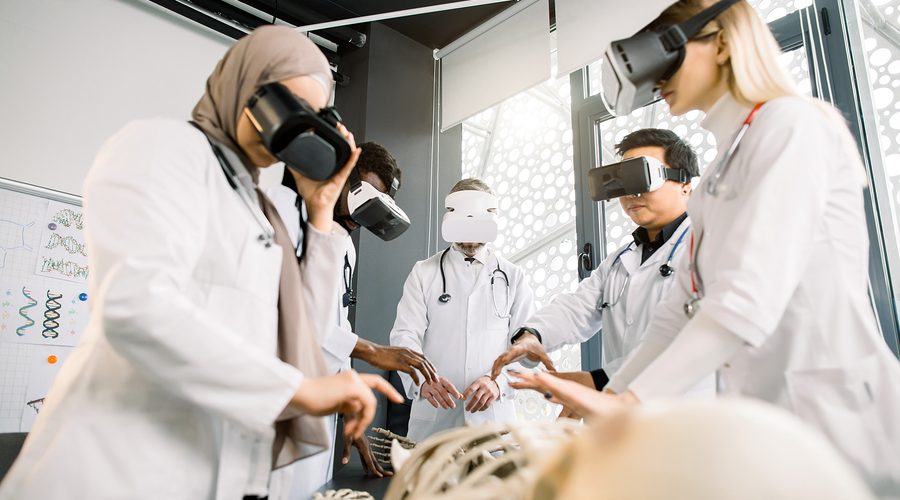OMS Interprofessional is the multiplayer VR simulation platform from Oxford Medical Simulation (OMS). OMS Interprofessional allows multiple learners to be in the same virtual reality scenario at one time, whether they are in the same room or different countries. Learners can collaborate, discuss and make decisions as a team, just like in real life, to improve patient care
Driven by our mission to provide healthcare professionals with quality, effective clinical training at scale our multiplayer scenarios are fully immersive and interactive. Learners across disciplines can now practice managing patients as a team in real life clinical environments without risking patient safety. This regular, flexible training builds teamwork, confidence, competence and optimises transfer of learning to practice.

How does it work?
Using VR headsets, learners are immersed in clinical environments with dynamic, engaging patients in true-to-life clinical scenarios where they can assess and treat patients in collaboration with their colleagues. Learners can see multiple patients, interviewing, examining, investigating, engaging with their interdisciplinary team to treat their patient – who responds as in real life.
The focus in OMS Interprofessional is on teamwork, communication, critical thinking and clinical reasoning – allowing clinicians to apply their knowledge and learn together. After each scenario learners enter a group debriefing environment, allowing them to analyse performance as a team, discussing the case and focusing on human factors just like in traditional simulation.
Team performance analytics are also available to learners and faculty to facilitate debriefing, progress tracking and needs identification. Learners can enter the multiplayer environment with faculty or as independent teams allowing for flexible and adaptive use cases.
Learn more about how it works.

What are the benefits?
There are multiple benefits to integrating OMS Interprofessional into healthcare training curricula. The immersive team-based scenarios allow interdisciplinary teams to work together repeatedly at any time to refine teamwork and communication skills. This flexible system lets organizations deliver simulation efficiently and effectively to improve patient care.
The portable, stand-alone OMS system is simple set-up, while intuitive, faculty-free use allows organizations to scale simulation delivery and integrate simulation into everyday practice.Moreover, multiplayer VR simulation allows learners to be trained at distance, entering scenarios from anywhere in the world regardless of their proximity to faculty and physical training locations. Faculty can be based in New York and train learners in Nairobi!
Every scenario accurately mirrors real-life, with peer-reviewed presentations, adaptive conversation, pharmaceutical modelling and dynamic physiology to ensure clinical realism. This provides consistently quality, standardized simulation on demand. The OMS system then provides immediate, intelligent, team-based feedback on technical and non-technical skills, consolidating knowledge and facilitating debrief. Detailed metrics and analytics dashboards allow organizations to objectively measure performance and track improvements over time, whilst customizable feedback and blended learning allow seamlessly integration with curriculum requirements and protocols.

Author
Dr Jack Pottle
Oxford Medical Simulation, UK














